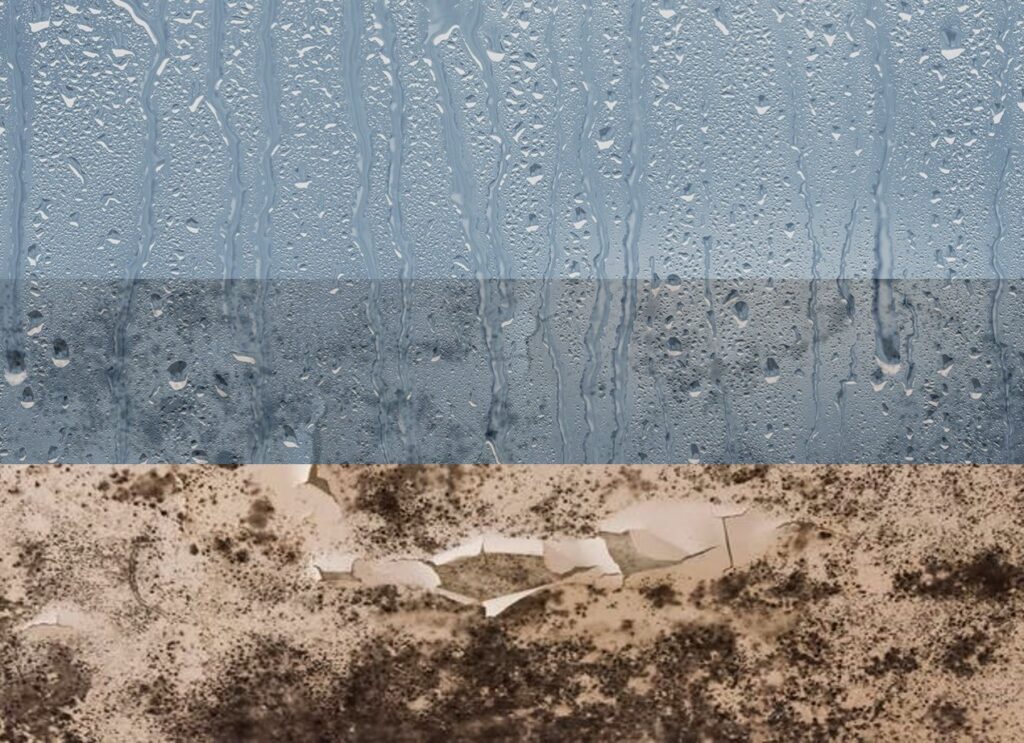
To keep the indoor air quality of your building high and to prevent potentially dangerous conditions for inhabitants, it’s important to take the proper precautions to prevent mold and mildew in humid weather. Mold can deteriorate building materials, cause discoloration and odor problems, and lead to allergic reactions in susceptible individuals, as well as other health problems.
The following conditions are necessary for mold growth to occur on surfaces:
- Temperature range above 40°F and below 100°F – Human comfort constraints sometimes limits the use of temperature control
- Mold spores – Almost always present in outdoor and indoor air
- Nutrient base (most surfaces contain nutrients)- almost all commonly used construction materials and furnishings can provide nutrients to support mold growth. Dirt on surfaces provides additional nutrients.
- Moisture – control is thus an important strategy for reducing mold growth.
These are basic steps to control moisture and limit the instance of mold or mildew in your building:
- Keep Air Cool – by using an HVAC system or an air conditioning unit.
- Increase Airflow – along with HVAC system or air conditioner, use fans and keep internal doors open
- Use a Dehumidifier – if still experiencing a humidity problem
- Heat the Floor – an effective way to prevent condensation from forming on the floors or walls in below-ground areas or close to the foundation where temperatures are usually much cooler than the outside air.
- Clean and Disinfect– with non-polluting cleaners and antimicrobial agents provide protection against mold growth.
- Remove Porous Materials – especially those likely exposed to water vapor, near exterior doorways, bathrooms or locker rooms.
Either surface temperature or vapor pressure can be the dominant factor in causing a mold problem. A surface temperature-related mold problem may not respond very well to increasing ventilation, whereas a vapor pressure-related mold problem may not respond well to increasing temperatures. Understanding which factor dominates will help in selecting an effective control strategy.
For more information read https://www.osha.gov/dts/shib/shib101003.html
Or contact Tim Popp, Director of Environmental Consulting, at timp@ttienv.com
